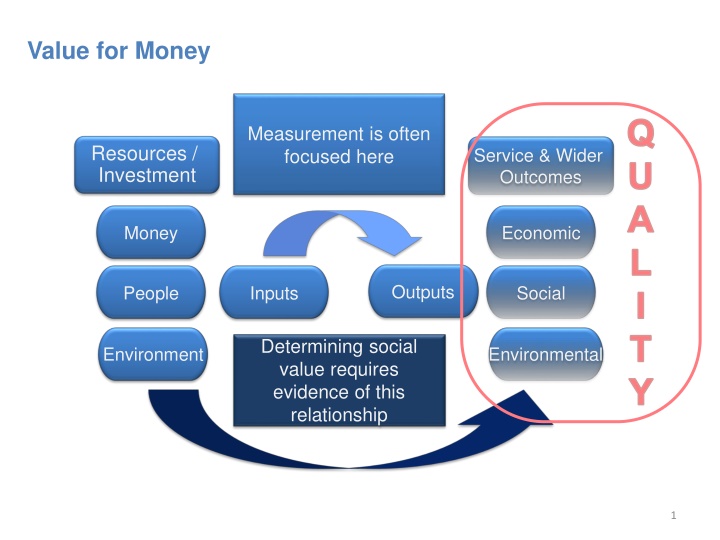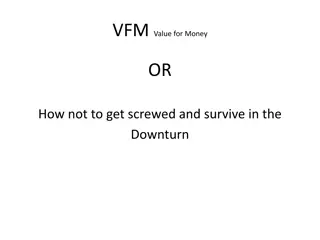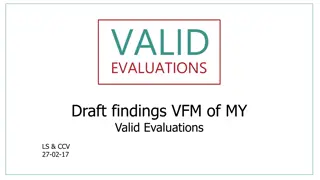
Value for Money Measurement and Impact in Resource Allocation
Explore the concept of Value for Money (VfM) measurement focusing on resources, investments, services, and broader outcomes. Learn about additionality, internal impetus, organizational approaches, and effectiveness in program cycles. DFID feedback provides insights on VfM reporting quality.
Download Presentation

Please find below an Image/Link to download the presentation.
The content on the website is provided AS IS for your information and personal use only. It may not be sold, licensed, or shared on other websites without obtaining consent from the author. If you encounter any issues during the download, it is possible that the publisher has removed the file from their server.
You are allowed to download the files provided on this website for personal or commercial use, subject to the condition that they are used lawfully. All files are the property of their respective owners.
The content on the website is provided AS IS for your information and personal use only. It may not be sold, licensed, or shared on other websites without obtaining consent from the author.
E N D
Presentation Transcript
Value for Money Q U A L I T Y Measurement is often focused here Resources / Investment Service & Wider Outcomes Money Economic Outputs People Inputs Social Determining social value requires evidence of this relationship Environment Environmental 1
Definition: at a very basic level, additionality is about measuring net, rather than gross, impacts. In other terms: It s challenging e.g. capturing additionality Counter-factual Contribution Outcome Impact Displacement This can also entail capturing so-called positive knock- onoutcomes and impacts . 2
Impetus for the work Internal Management/ Governance bodies Operations: interest in economy and efficiency Programmes: recognition of the complexity DFID PPA Pressure on use of public funds Economy, and Effectiveness measures If you don t define value, someone else will do it for you.
Approach - framings for Value for Money What is your organisational position on VfM? It s about what is right for you and your organisation to make good decisions. 1) Organisational economy and efficiency Overall quality management system Procurement process Overhead costs etc. 2) Individual programmes (programme cycle) Managing through the cycle with VfM in mind Sometimes deeper evaluative techniques (cost effectiveness, SROI) 3) Programme portfolio management Supporting decision-making
Effectiveness in the programme cycle 5
DFID feedback on WWF reporting ...a very good understanding of VfM a commitment to the VfM agenda. the cost category/ cost driver section is strong economy: demonstrates good practice and specific savings. VfM measures too vague. Did not provide specific metrics evidence on effectiveness is good, indicating WWF is committed to results and maximising your impact. With the exception of the VfM measures which could be improved, we would like to congratulate WWF for your strong VfM reporting. 6






















